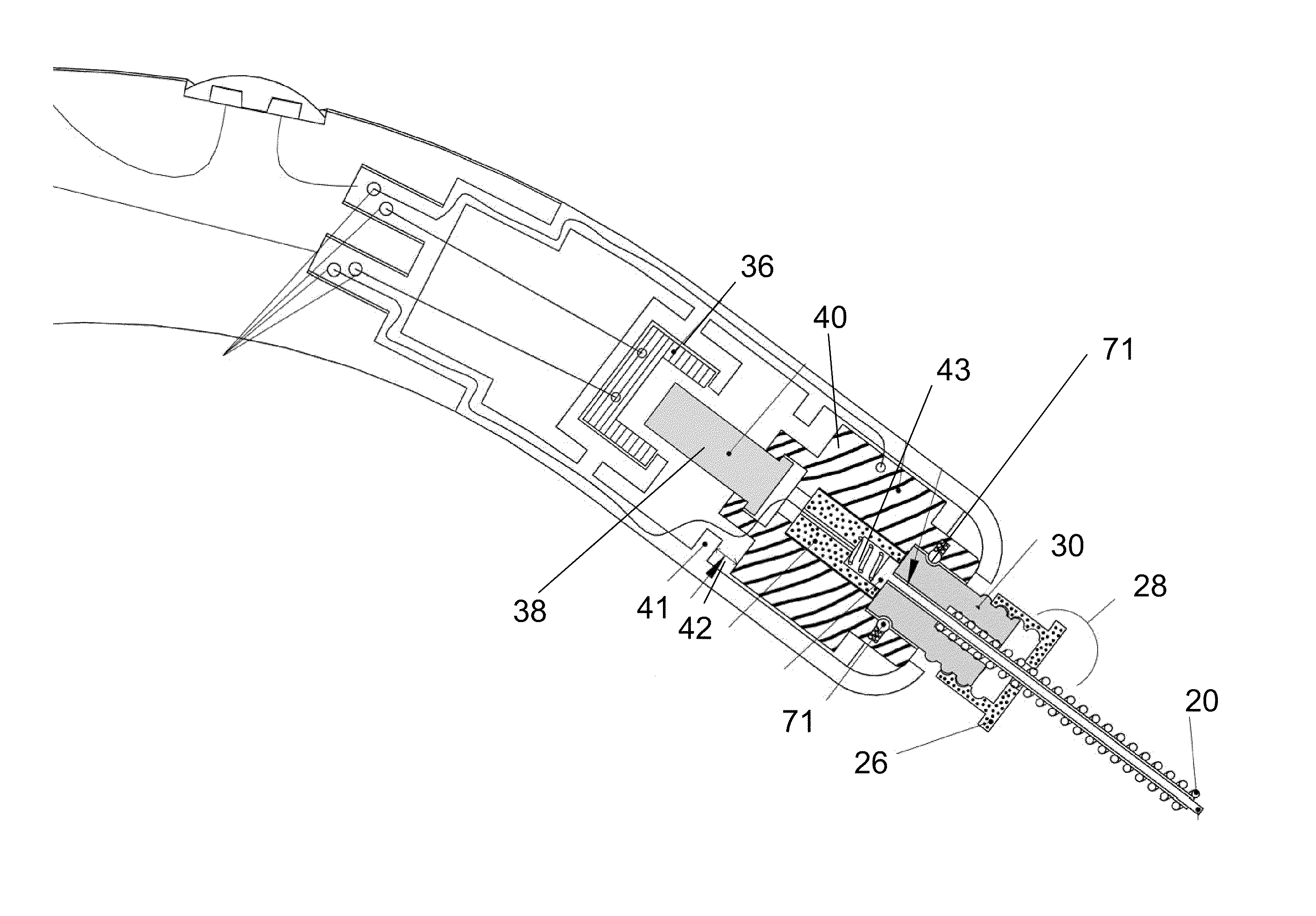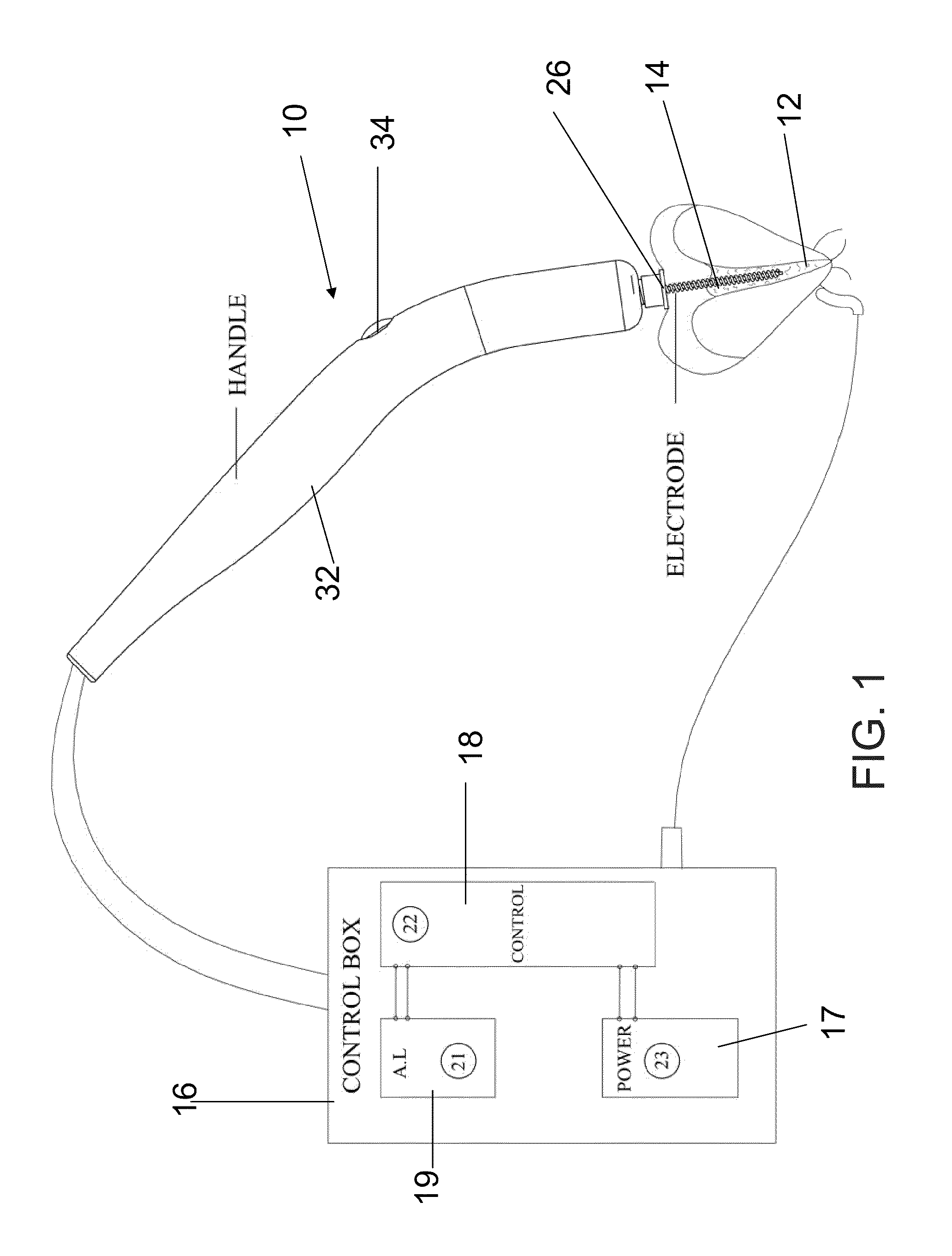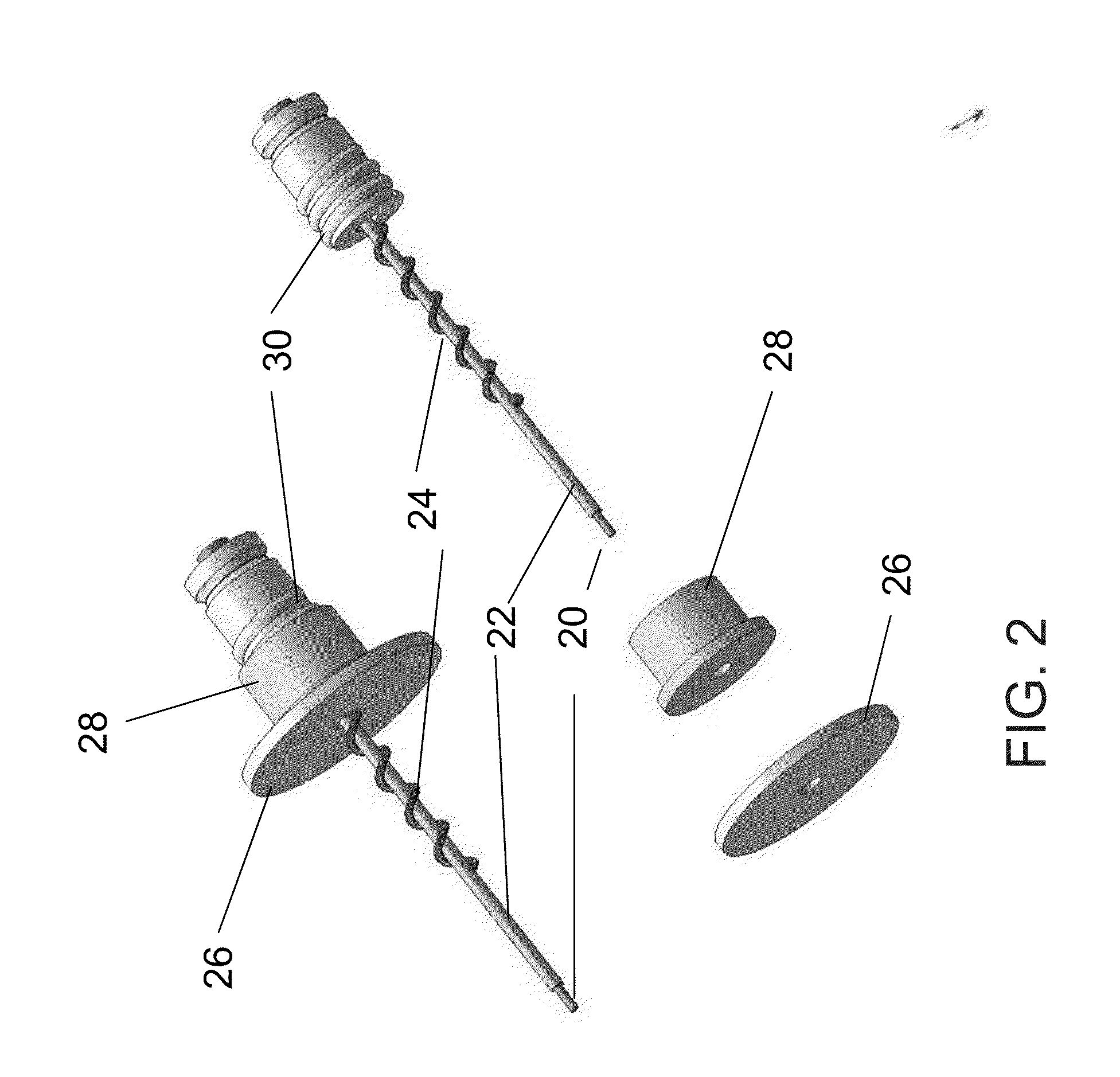Device and method for dental cavity treatment
a technology for dental cavities and devices, applied in the field of devices and methods for treating dental cavities, can solve the problems of high fluid toxicity, difficult to remove bacterial films, and ineffective removal and disinfection procedures
- Summary
- Abstract
- Description
- Claims
- Application Information
AI Technical Summary
Benefits of technology
Problems solved by technology
Method used
Image
Examples
Embodiment Construction
[0048]The present embodiments comprise an apparatus and a method for root canal sterilization using electrical energy, where an electrode pair is inserted into the root canal. A discharge is induced between the electrodes of the electrode pair. The current is confined to the root canal, and electrical energy is therefore kept out of surrounding tissues. The result is that several Joules of energy can be released within the root canal to kill the bacteria, without detrimental effect on the human body
[0049]The effect can be enhanced by filling the root canal with either a conductive fluid, such as salt water or an irrigation fluid such as 17% ethylenediaminetetraacetic acid (EDTA), to take two examples. Other fluids with high conductivity and / or sterilizing or disinfecting ability may also be considered. Mixtures of conducting materials and sterilizing or disinfection agents may also be used. In an embodiment of the invention a conductive fluid is placed in the root canal and the elec...
PUM
 Login to View More
Login to View More Abstract
Description
Claims
Application Information
 Login to View More
Login to View More - R&D
- Intellectual Property
- Life Sciences
- Materials
- Tech Scout
- Unparalleled Data Quality
- Higher Quality Content
- 60% Fewer Hallucinations
Browse by: Latest US Patents, China's latest patents, Technical Efficacy Thesaurus, Application Domain, Technology Topic, Popular Technical Reports.
© 2025 PatSnap. All rights reserved.Legal|Privacy policy|Modern Slavery Act Transparency Statement|Sitemap|About US| Contact US: help@patsnap.com



